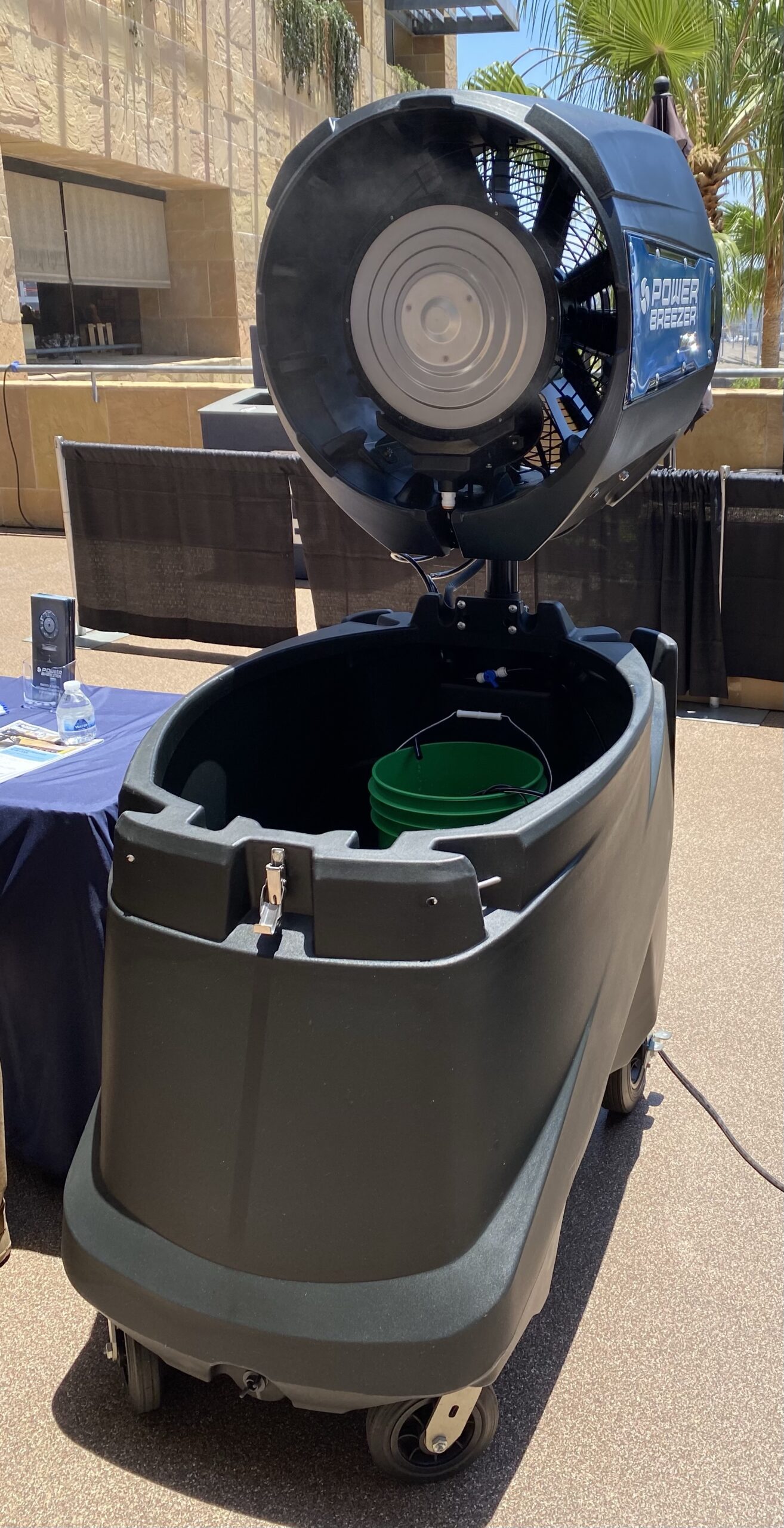
Power Breezer has upgraded the atomizer on their Mach 4+. Additionally, it has been issued NSN 4140-01-624-3989.
Power Breezer products are available for unit and agency orders from ADS, Inc.

Power Breezer has upgraded the atomizer on their Mach 4+. Additionally, it has been issued NSN 4140-01-624-3989.
Power Breezer products are available for unit and agency orders from ADS, Inc.
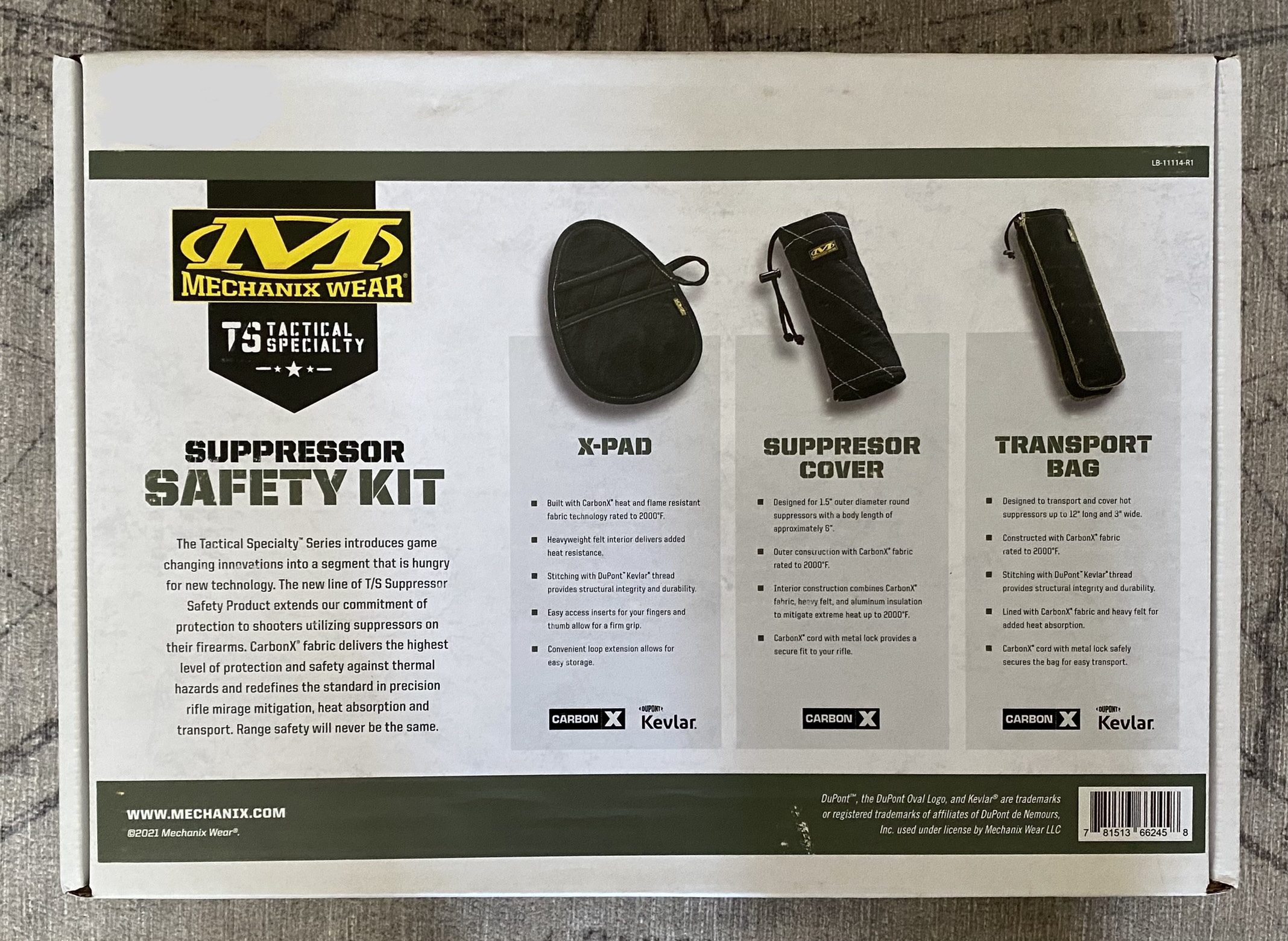
Recently, we mentioned Mechanix Wear’s new suppressor safety products. Now, they’re available as a kit containing an X-Pad, Suppressor Cover, and Transport Bag which are all made from CarbonX heat-resistant fabric and Kevlar thread.
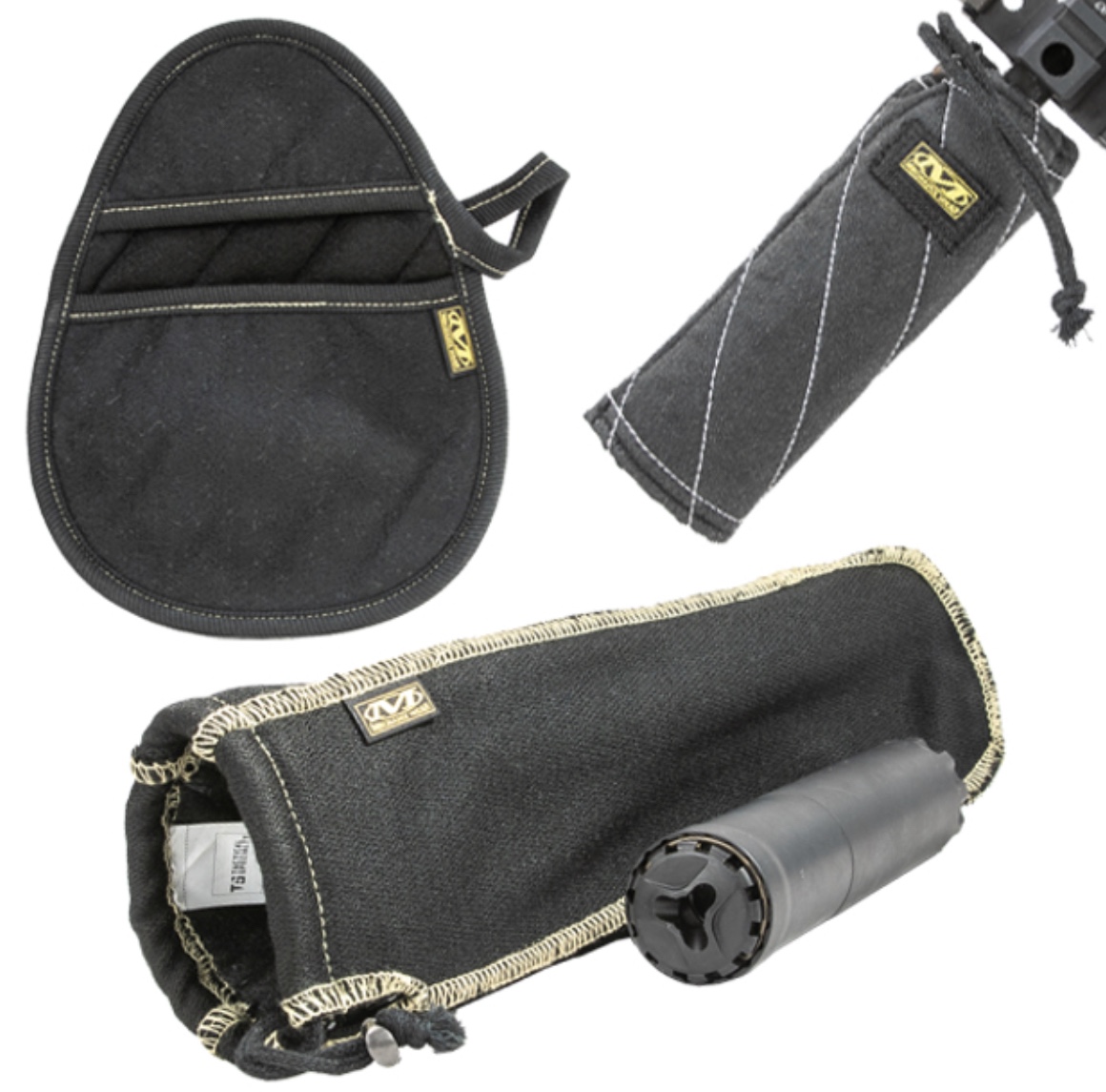
Please note, there’s a nylon tag in the Suppressor Cover which you need to remove before you use it in conjunction with a suppressor. It’s nylon, which will melt to your suppressor.
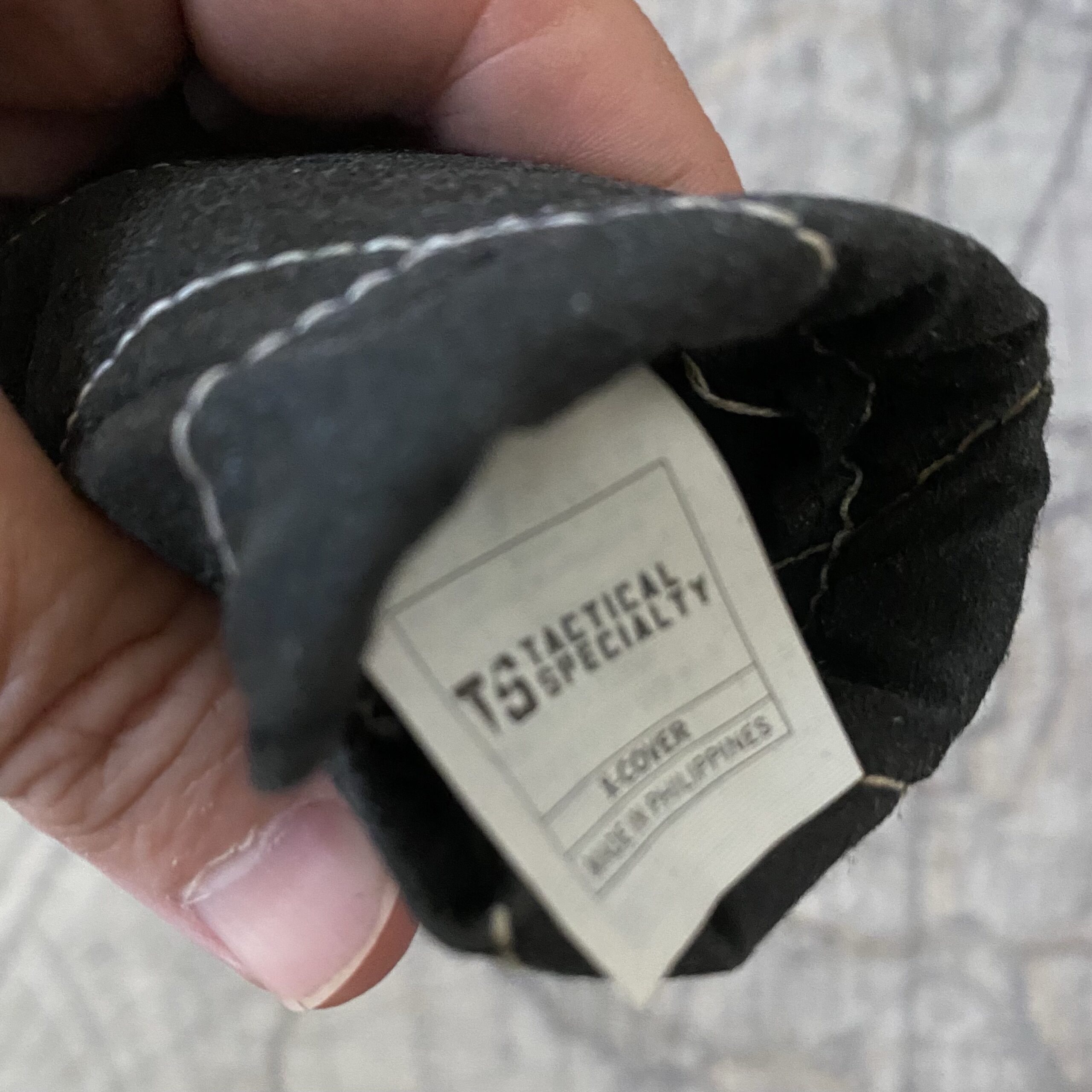
Mechanix Wear products are available for unit and agency orders from ADS, Inc.
The Accuracy Under Fire Training System from Dynamis Alliance uses Simulated Injury Technology.
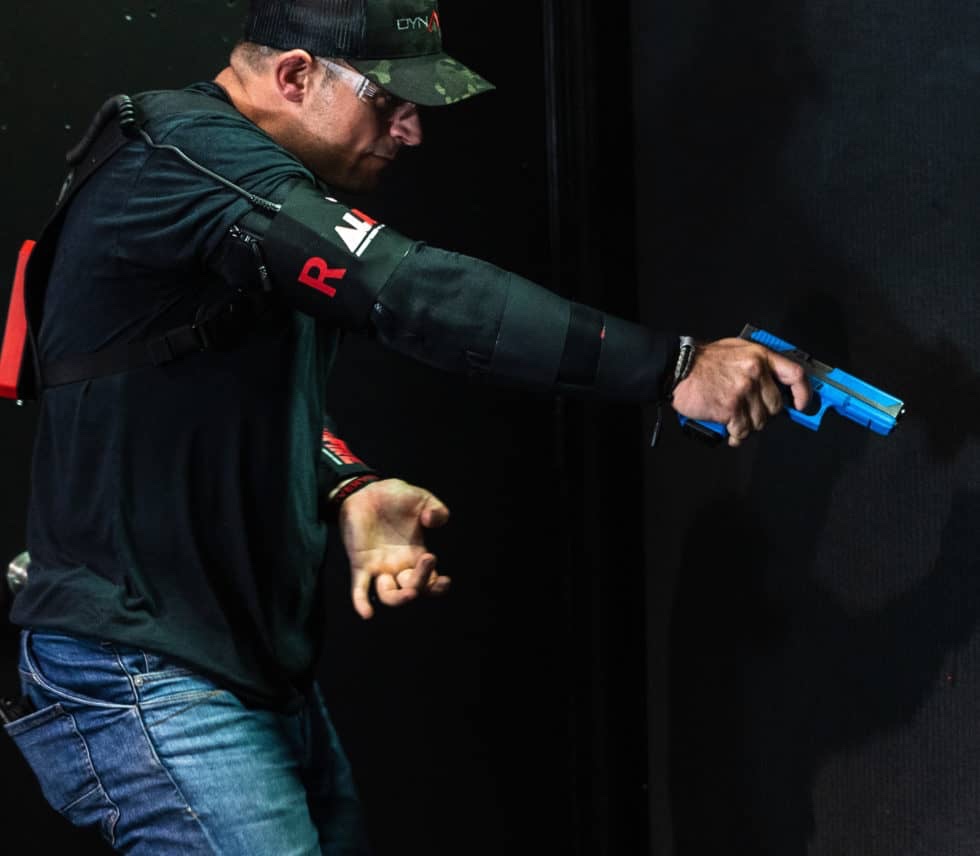
At the push of a button, the trainer can unleash an electrical current directly into targeted muscle groups on the trainee via a remote control. The conductive stimulation temporarily impairs a specific body part and simulates a disabling injury. The AUFire System allows you to select among 7 points of simulated injury within the arms and abdomen.
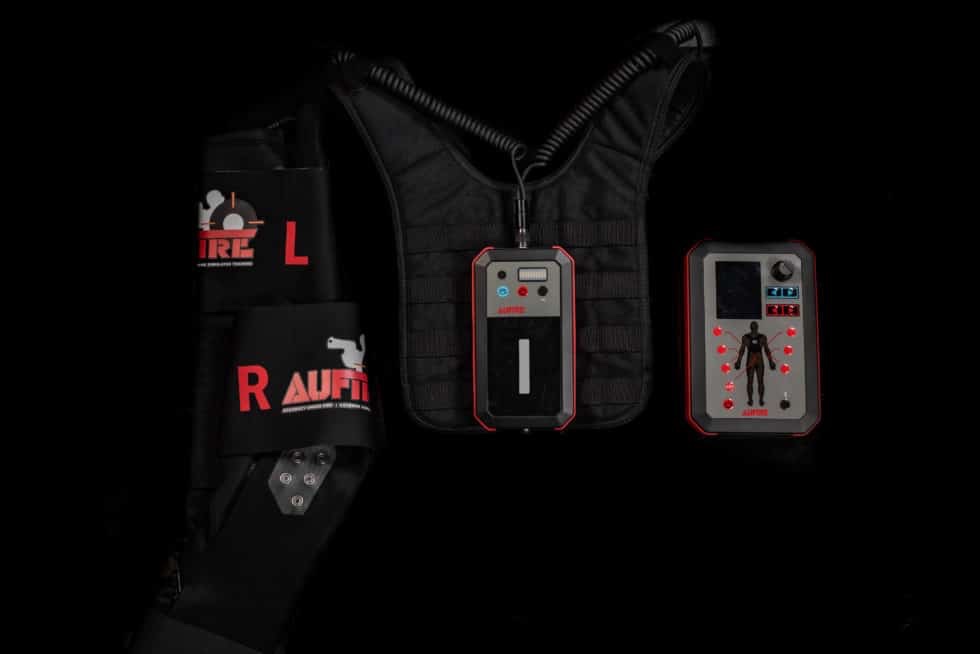
Dynamis Alliance products are available for unit and agency orders from ADS, Inc.
Tampa, FL (July 8, 2021) – B&T USA is excited to announce the release of its next generation SPR300 (Special Purpose Rifle 300BLK), the SPR300 PRO. Built for maximum accuracy out to 165 yards, the SPR300 PRO features a 9.8-inch 1:8 twist barrel chambered for 300BlackOut (7.62x35mm). The platform features a foldable, fully adjustable stock; extended top rail designed to accept clip-on night vision/thermal devices and prisms; a quick-detach bipod and a thread-on suppressor. Due to precision Swiss engineering, the SPR300 PRO can be broken down and quickly reassembled with no change in point of impact.
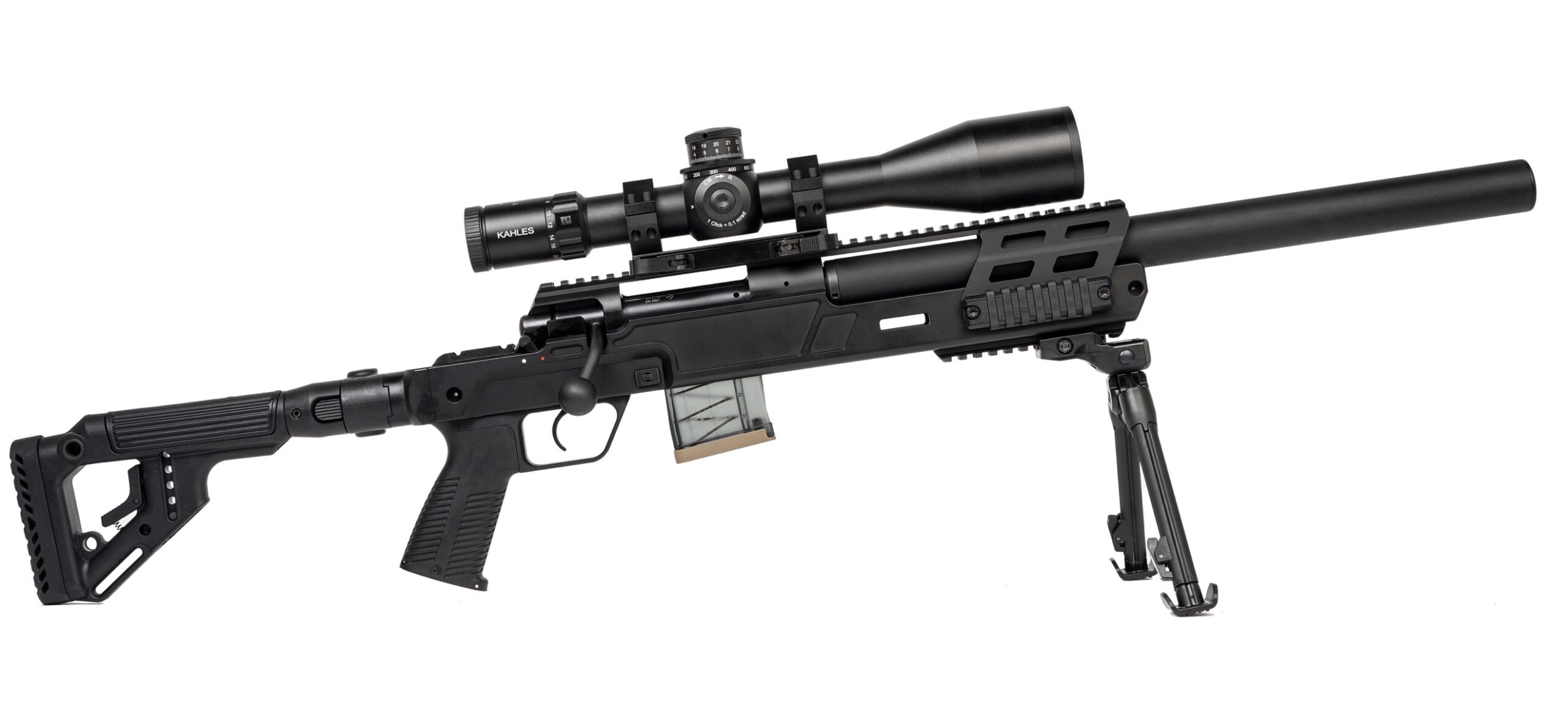
“Due to increased demand, the SPR300 has jumped the line to receive our updated PRO treatment. The new PRO version features an updated chassis, accepts AR-pattern magazines, features a Timney match trigger and has a new folding stock assembly compatible with the myriad of AR/M4-style stock models available today” said Jon Scott, Vice President of Sales, B&T USA. “The SPR300 has an incredible reputation as a whisper quiet precision rifle originally developed for European special mission’s units, who have allegedly used the platform to great success as a discreet, urban precision rifle, that boasts comparable sound and flash signature to that of an air rifle.”
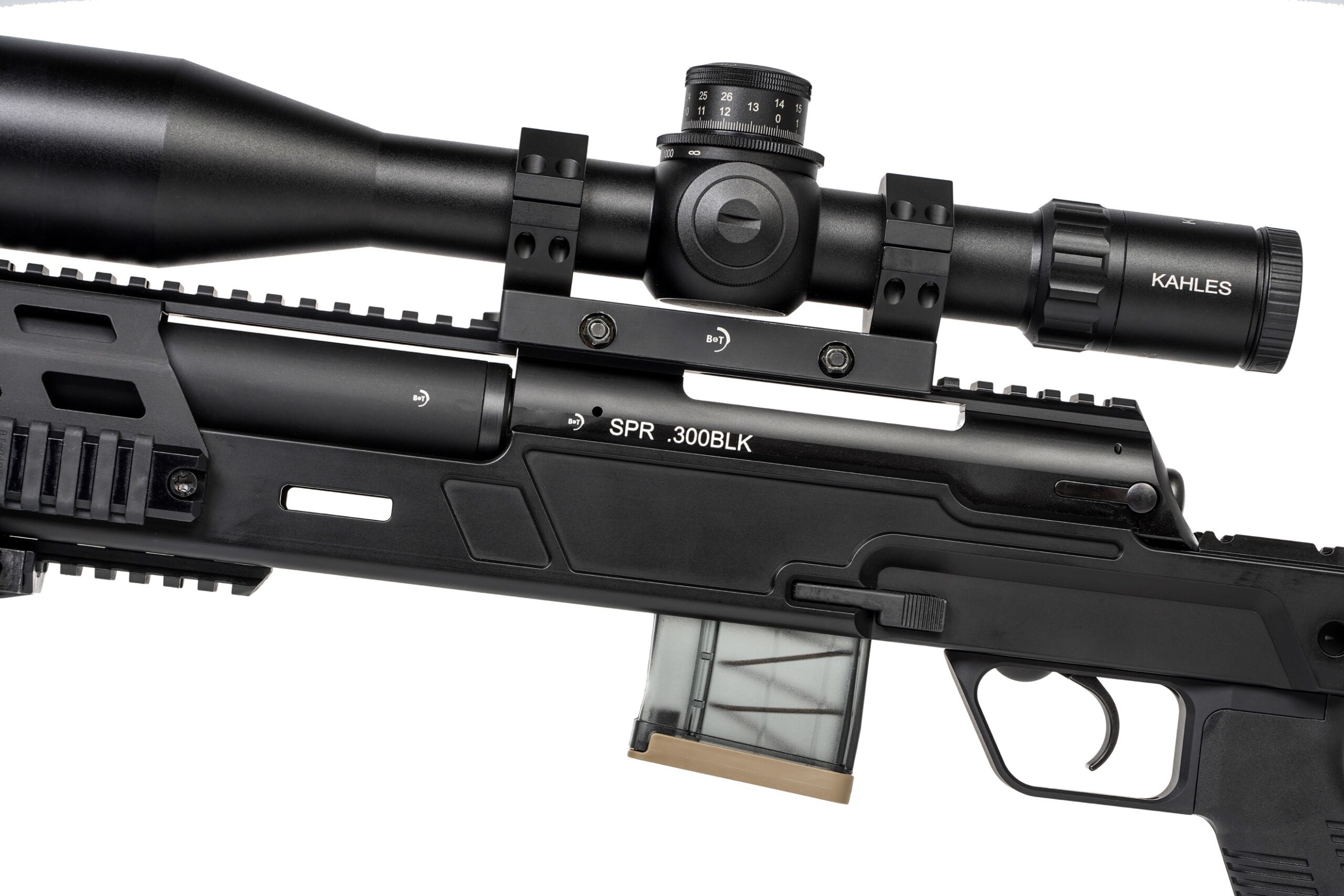
The SPR300 PRO features a durable hard anodized, aircraft aluminum receiver for reduced weight, a Timney single-stage Hunter Elite trigger adjustable from 1.5 lb. to 4 lbs., M-LOK compatible accessory slots, a three-position safety selector, as well as cocked bolt indicator.
• Provides a standardized user experience (UX) across multiple air vehicles, communication platforms and end-user devices for streamlined operation and deployment
• Improves battlefield communication and collaboration by enabling users to easily share real-time information and coordinate mission-critical decisions
• Builds upon AeroVironment’s legacy ground control system (GCS) and adapts to today’s network-centric battlefield environment
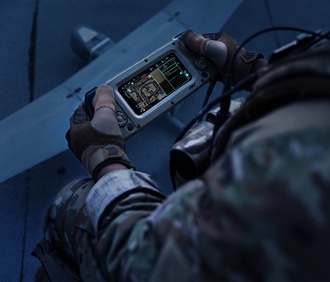
AeroVironment’s new Crysalis Ground Control Solution (Photo: AeroVironment, Inc.)
ARLINGTON, Va. July 7, 2021 – AeroVironment, Inc. (NASDAQ: AVAV), a global leader in intelligent, multi-domain robotic systems, today introduced Crysalis™, the company’s next-generation ground control solution. Crysalis is an integrated hardware and software-based ground control system (GCS) that provides command and control of compatible AeroVironment unmanned aircraft systems (UAS) and their payloads, through an intuitive user experience (UX).
Built around three core elements – software, hardware, and antennas – Crysalis was designed to make operating robotic systems easier than ever before. Crysalis offers complete interchangeability, either as modular elements or turnkey systems, both adaptable to meet specific mission requirements. Crysalis is cross-platform compatible with Android, Microsoft Windows and Linux operating systems. The new GCS is available in multiple configurations ranging from lightweight and wearable to mobile and command center systems that are modular and scalable.
Crysalis was designed with the operator in mind, featuring an intuitive user interface (UI) to reduce cognitive load and training burden while enhancing situational awareness and battlefield collaboration. Through the easy-to-use Crysalis Control app, users can plan and execute flight missions as well as navigate and control UAS assets and payloads with one-click access to critical information, modes and telemetry meta data. Additional operational participants can gain enhanced situational awareness, share information and collaborate on tactical decisions by accessing telemetry and downlink data through remote video terminals, while also allowing them to capture data directly on their devices. Crysalis standardizes the user experience across all AeroVironment small UAS platforms, simplifying the training requirements and operation of Puma™, Raven® and Wasp®.
“With the introduction of Crysalis, we are streamlining command and control of our small UAS and empowering warfighters with actionable intelligence at the speed of war to increase their tactical decision making,” said Wahid Nawabi, AeroVironment chairman and chief executive officer. “Crysalis can be integrated into our portfolio of intelligent, multi-domain robotic systems and deliver easy-to-use, yet powerful new capabilities that enable our customers to succeed in full spectrum operations.”
The Crysalis GCS is available in scalable hardware configurations with all necessary software components pre-configured for quick mission deployment. These range from the Crysalis Ultralight GCS that provides full control of UAS and payloads through virtual control or tactile joysticks on a wearable smartphone configuration to Crysalis Command GCS – a command center configuration featuring a ruggedized laptop. Every Crysalis GCS configuration is natively compatible with AeroVironment’s Digital Data Link™ (DDL™) radios and antennas, is designed for plug-and-play compatibility with Nett Warrior and can integrate with both third party command and control and battlefield management applications.
“As a software-based ecosystem, Crysalis will continue to develop and evolve based on customer needs and front-line user feedback with expanded aircraft command and control capabilities, software features and IoBT compatible functionality,” said Tom Vaneck, AeroVironment vice president of solution strategy.
For more information on AeroVironment’s Crysalis next-generation ground control solution, visit www.avinc.com/crysalis.
Strive is a performance monitoring system used by professional athletes. The EMG sensor array can be integrated into virtually any compression clothing. A removable (for charging) puck is located at the waist which transmits the telemetry and integrates an accelerometer and GPS.
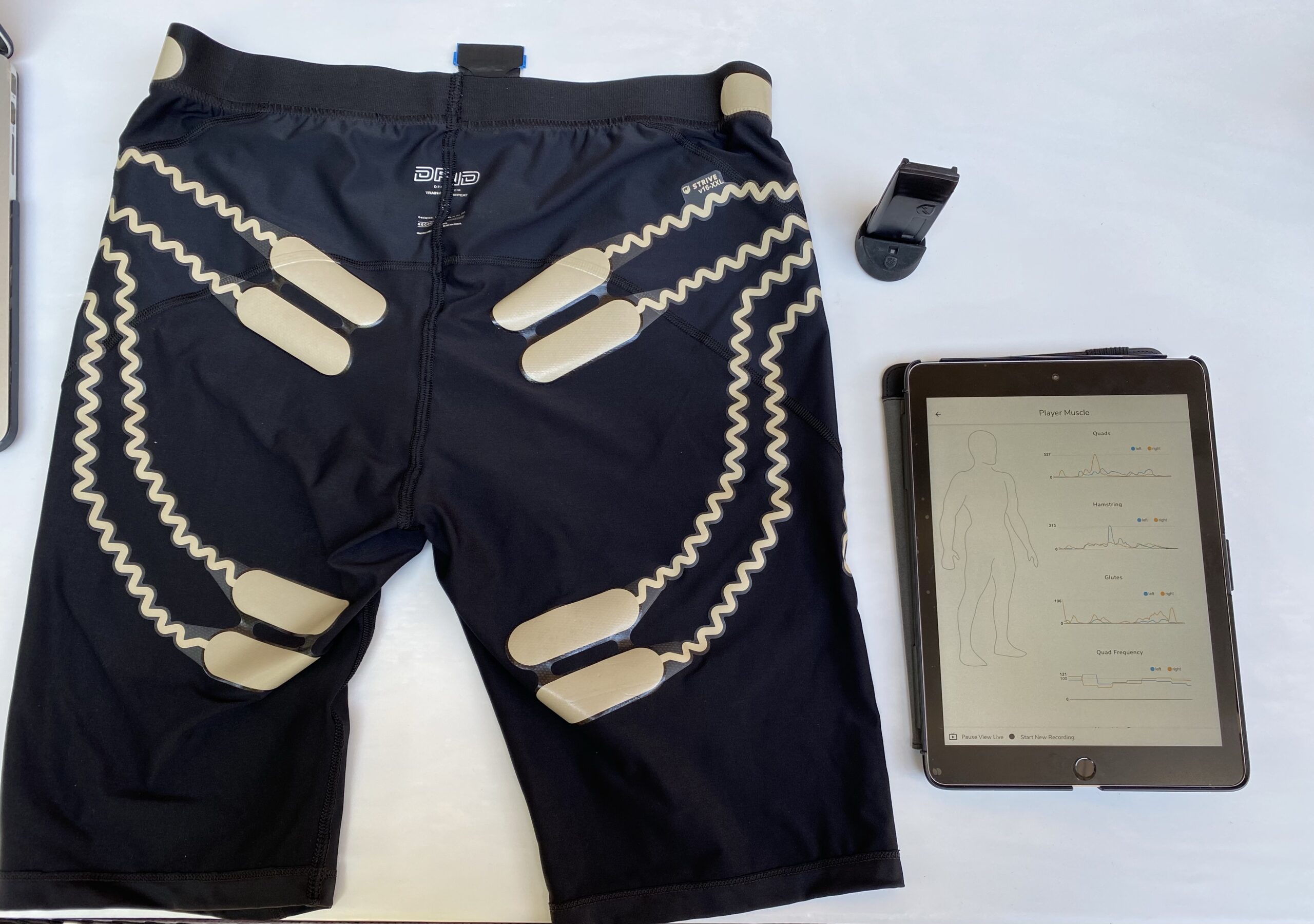
Muscle activation and use data can be accessed via an app on an end user device.
The Strive system is available for unit and agency orders from ADS, Inc.
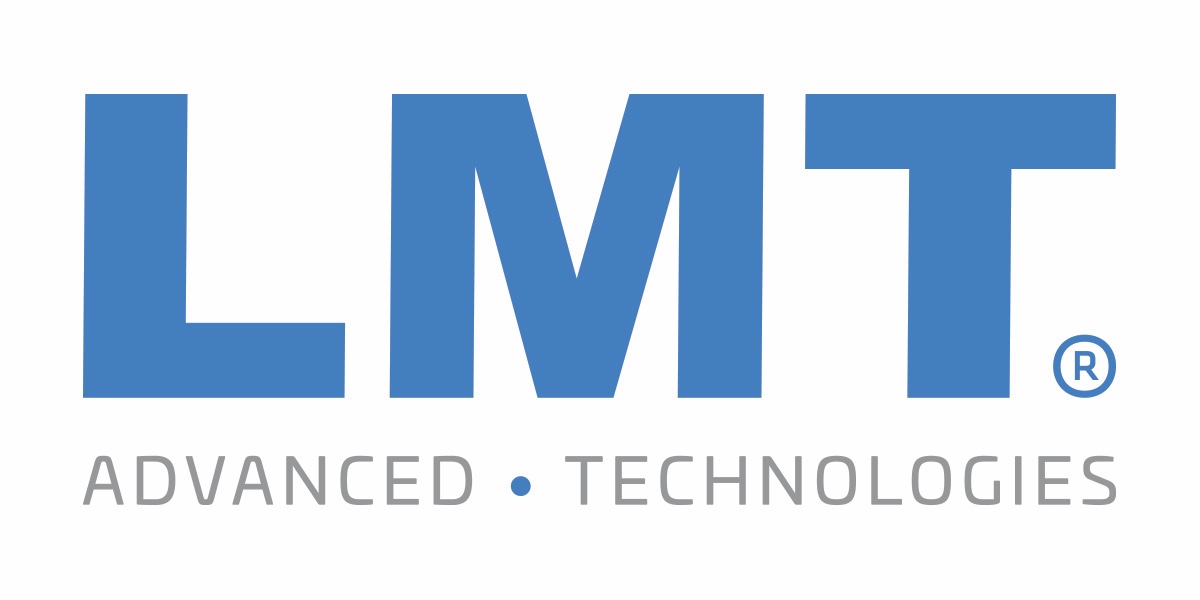
Karl Lewis, President and CEO of LMT Defense, forms LMT Advanced Technologies, LLC. Lewis claims, “Back in March of 2020, we created a company dedicated to developing innovative shooting solutions. Advanced Technologies (AT) has been working with multiple industry partners.” He further added, “AT has invested into research and development efforts to manufacture and market advanced weapon technologies to commercial, law enforcement, and military channels for both U.S. and international customers.”
Lewis named Chris Estadt to be the General Manager. “Chris brings 28-years of experience in the outdoor/shooting sports industry to LMT Advanced Technologies.” Estadt has held multiple roles within the industry, including Owner, Vice President of Sales and Marketing, Vice President of Business Development, National Sales Manager, and Senior Regional Director. Lewis adds, “He has a proven track record of developing premium products, working with dealers, distributors, end-users, and OEMs.”
Estadt says, “I am looking forward to the challenges of launching the brand, building a product portfolio, developing strategic partnerships, and delivering impactful technologies.” Estadt went on to say, “We will be launching the website soon and announcing our first product release in the coming weeks.”